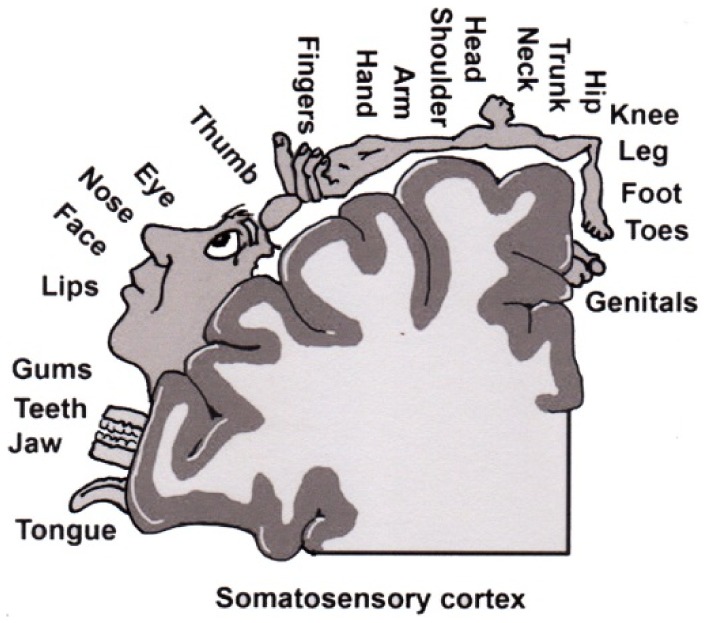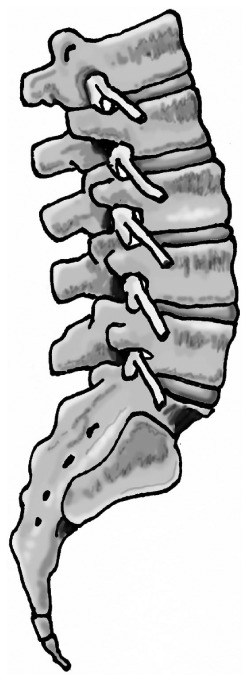-
•
Have a look at this picture – it’s a picture of a brain map of a human body
-
•
In your brain there is a map telling you where your body parts are. For example, if we had you close your eyes and touch your nose with your right index finger, you’d have no problem doing it
-
•
When life is good and we move during daily tasks, work, and exercise these maps are ‘exercised’ and they stay healthy – sharp and crisp – so we know where the body parts are
-
•
When we have pain, move less and do less, the brain areas are not exercised and in essence become blurred
-
•
Scientists have now shown us that this happens very fast and the more ‘blurred’ the area is, the more pain we have
-
•
We can retrain the brain maps
-
•
Today I am going to do some manual treatments to your back as a means to help your brain sharpen its maps
|
-
•
Here is a picture of your low back
-
•
There are five bones in your lower back
-
•
When life is good and we move, for example, bending forward, each level takes part in the movement and in essence shares the load
-
•
When we develop back pain – some levels stiffen up due to swelling and muscle spasms as a means to protect you
-
•
I am going to do some treatment on your back with my hands to loosen up your back with the aim to make each level move
|



